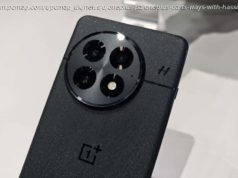Samsung’s new Galaxy Z Fold 6 looks sturdier, faster, and (dishearteningly) pricier. Should you pay attention if you already have a Galaxy Z Fold 4?
Samsung is once again trying to woo foldable phone enthusiasts back into its camp with the Samsung Galaxy Z Fold 6. The key attraction this time around is a fresh design served in a thinner chassis. There’s a faster chipset inside, a slightly more durable build, a redesigned hinge mechanism, and a shallower crease on the inner foldable panel.
All that comes at a $100 price increase, though. Needless to say, it doesn’t sound like a particularly exciting year-on-year upgrade compared to the Galaxy Z Fold 5 and it’s certainly not a standout device compared to rivals like the OnePlus Open and the Vivo X Fold 3 Pro.
But if you’ve been rocking the Galaxy Z Fold 4 and are of two minds as to whether to stay put or splurge on an upgrade, there are a few aspects you should keep in mind. In this comparison, we are going to focus on the key differences that should matter to buyers.Samsung Galaxy Z Fold 6 vs. Galaxy Z Fold 4: specsGalaxy Z Fold 6 vs. Galaxy Z Fold 4: design and build
For the Galaxy Z Fold 6, Samsung has created a “ dual rail hinge structure” paired with a strengthened folding edge, and a higher resilience to shock absorption alongside the frame. The company has also used an enhanced variety of Armor Aluminum and the second-gen Corning Gorilla Glass for the cover display and the rear shell.
Samsung won’t say what degree of added protection they offer, but these materials are certainly more resilient. The crease on the inner flexible screen is also smaller. The biggest difference, compared to the Galaxy Z Fold 4, is that there is no gap between the two halves of the phone when the phone is shut closed.
That’s a major relief, as the exposed gap allowed dust and liquid particles to make their way inside. Given the history of damages that many buyers have reported, the Galaxy Z Fold 6’s gapless design should be a key selling point. For the first time, Samsung has also added dust protection to its foldable, bestowing IP48 protection upon its latest phone.
Digital Trends’ review highlighted improvements such as better weight distribution, while also being more comfortable to hold. The Galaxy Z Fold 4 only served an IPX8 level of water resistance, but no validated protection against dust. Better shock distribution to external impact might sound like typical marketing jargon, but in the context of a foldable, it’s anything but.
We recently investigated foldable hardware complaints at official Samsung centers and encountered issues where bumps and drops misaligned the hinge assembly. As a result, the Samsung foldable refused to open fully, and there were glue leakage issues. The Galaxy Z Fold 6 seems to have taken a much-needed measure to fix those woes.
Regarding the 2024 slate of foldable phones, Samsung says these make for “the most durable Galaxy Z series yet,” while also being the slimmest and lightest foldable phones it has ever made. In a nutshell, if your primary concern is the build quality, the Galaxy Z Fold 6 delivers practical benefits over the Galaxy Z Fold 4.Galaxy Z Fold 6 vs. Galaxy Z Fold 4: internals
Samsung has armed the Galaxy Z Fold 6 with Qualcomm’s Snapdragon 8 Gen 3 chip, while the Galaxy Z Fold 4 relies on the Snapdragon 8+ Gen 1 silicon. There’s definitely a performance boost on the table, but both are based on the 4nm process, so the lift isn’t as huge as one would expect from phones spaced two years apart.
Both phones come with 12GB of RAM and memory options starting at 256GB and going all the way up to 1TB. The battery capacity also remains the same at 4,400 mAh, and so do the charging credentials, which max out at 25 watts for wired charging.






